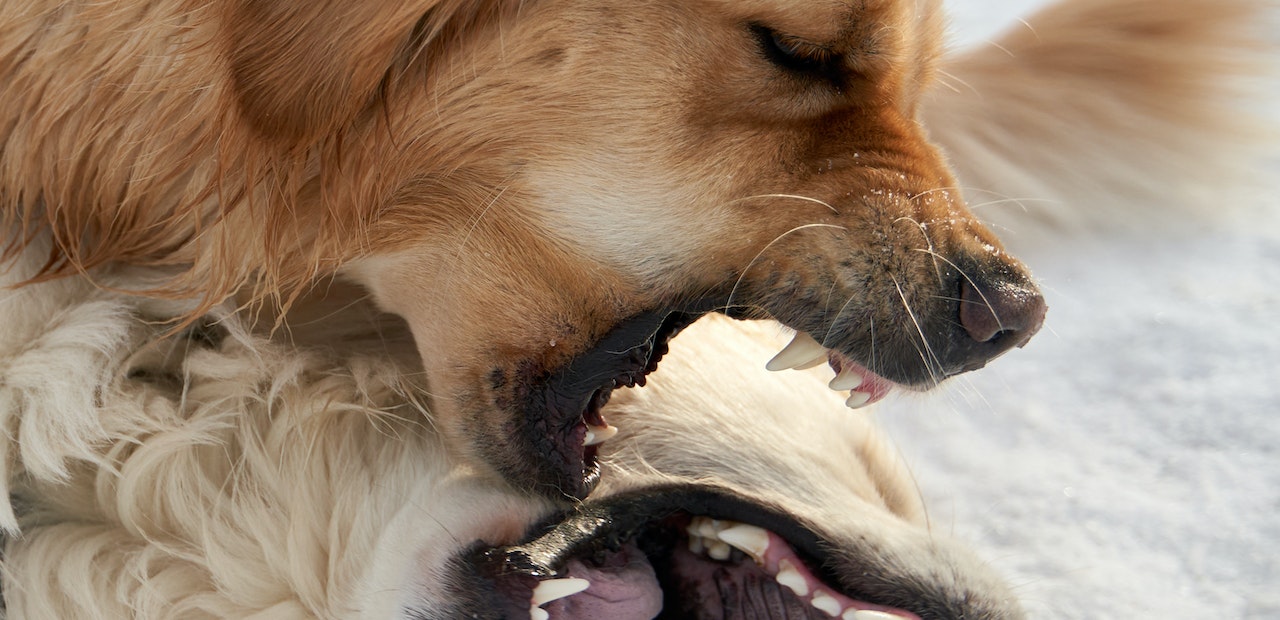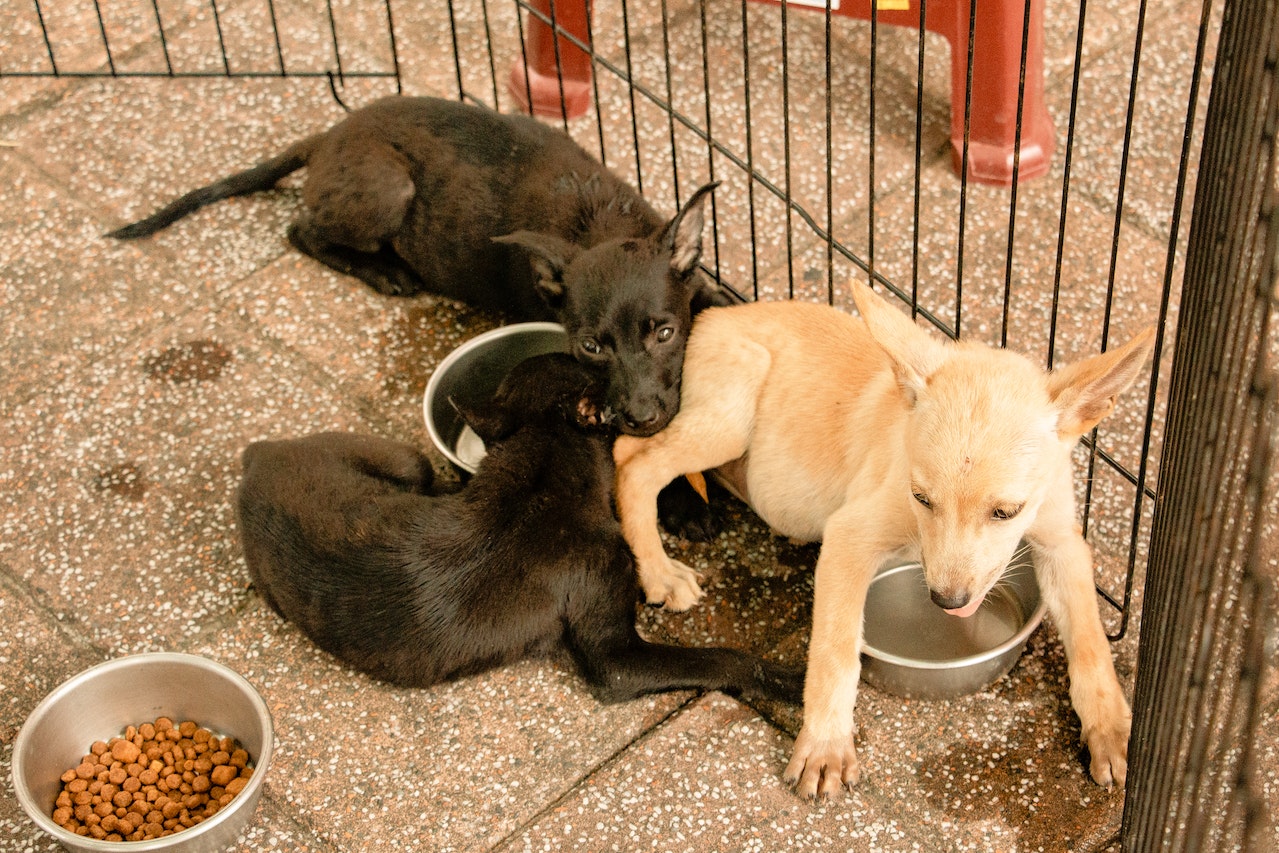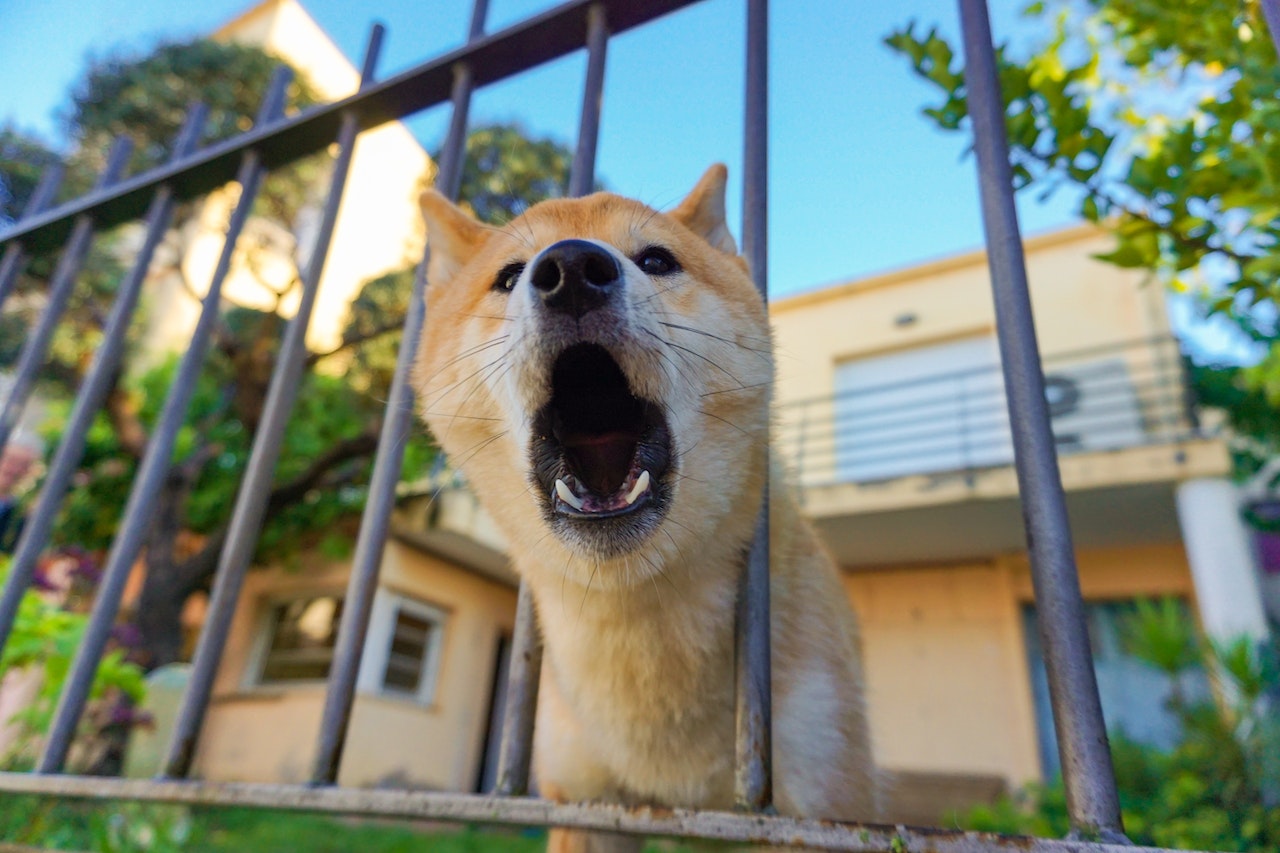
There are several causes of canine conflict, including play fighting, territorial disputes, separation anxiety, and behavioral issues. Even though it may seem like your dogs are fighting for no apparent reason, there are several potential causes. Dogs’ fangs and claws are quite sharp, therefore anybody who intervenes in a fight between two dogs risks being hurt, as well as the dog. As a dog owner, you should know what causes dog fights and how to stop them before they start, as well as what to do if a fight breaks out.
When dogs fight, why do they do it?

Numerous factors, such as:
Defense of Resources
Dogs that haven’t been properly socialized may display resource-guarding behaviors. Furthermore, many shelter dogs experience this as a symptom of underlying anxiety because they are constantly vying for the attention of humans and resources (toys and treats). Growling, rigid body language, barking, and even snapping or biting are common forms of resource-guarding communication.
Protecting
Your dog may be trying to defend you if he or she gets into a fight with another dog, even if it’s a member of the same family. Your dog may become fearful or aggressive if another dog approaches too closely, maybe lunging, barking, or even attempting to bite the other dog. The other dog may see this as an attack and decide to defend itself.
Frustration
The frustration of a dog might lead to aggression. A dog may snap at another dog if, while they are digging, another dog begins to dig in the same location.
Anxiety
Dogs often struggle with anxiety, which may lead to further behavioral issues including fear-based reactivity and dog-on-dog aggressiveness. Anxious dogs may bark and lunge at other dogs for no apparent reason. Keep in mind that anxiety triggers the “flight or fight” reaction, and unlike some humans, dogs may choose to “fight” rather than “flight” when they’re scared. A dog fight may break out if one dog signals to another that it feels threatened by the other dog, which can be interpreted as barking, lunging, and flashing teeth.
Challenges in Behavioral Management
We’ve established that unsocialized canines, like the ones we’ve described here, often display problematic behaviors. Dogs that are behaving out of fear are not labeled aggressive, but reactive, since they are merely responding to whatever it is that has caused them to be fearful.
Problems with Health
A dog with a painful medical condition may attack its owner or another dog if it feels threatened. A dog’s instinctive attempt at self-defense may be misinterpreted by another dog, leading to an altercation.
Dogs fight for many different reasons, but socialization and training are often at the root of the problem. If your dog has been well-socialized, it will respond appropriately when encountering other dogs. Canines who have been properly socialized are less likely to exhibit reactive or aggressive behavior toward other dogs. Reactivity may be exacerbated by fear or anxiety, thus some dogs might benefit from behavioral training.
Are My Dogs Fighting Or Playing?
As a human, it can be difficult to tell whether dogs are playing or fighting because dogs typically use their mouths and paws to play with one another. You can look at a dog’s body language to determine when a situation is either playful or aggressive.
Signs Dogs Are Playing
Play body language will look like the following:
- Relaxed, playful body language rather than tense
- Open, relaxed mouth versus tight, snarling lips
- Play bowing with the front end down and back end in the air
- Taking turns
- Exaggerated gestures rather than quick, tense movements
Signs Dogs Are Stressed Or Fighting
Dog body language can also tell you when a dog is getting upset, anxious, or aggressive. Signs a dog is stressed and might begin fighting soon or is already fighting are:
- Vocalizing
- Lip licking
- Tucking tail
- Ears back
- Whale eye (whites of eyes showing)
- Yawning
- Pacing
- Avoidance
Even though a dog’s tail is wagging, it doesn’t always imply it’s happy or at ease. While fighting, a dog’s tail may wag, but it will do so in a more erect position and with a different swing. If you see your dog becoming agitated, you should go investigate to make sure no animals were harmed.
Methods For Fostering Risk-Free Canine Play

Safe play spaces are the greatest approach to teaching dogs living together or at the park to get along with one another and avoid fighting. Here are some tips for encouraging risk-free canine recreation.
Learn the canine’s body language.
The first indicator of whether or not your dog is happy or anxious is how they carry itself. Dogs, as we’ve established, are capable of vicious behavior when under pressure. To further guarantee that your dog doesn’t get wounded when playing with other dogs, you should be aware of the red flags to check for in the other dogs.
The use of dog parks should be avoided unless absolutely required.
Unfortunately, not every dog should visit a dog park.
In the presence of other dogs, a dog that has not been properly socialized may feel anxious. Take your dog to a park and observe how they respond to the noise, people, and other dogs before deciding to let them run free.
If you don’t think your dog is yet ready to go to the dog park, you may start socializing and training him or her by having him or her play with another dog in the house or a dog he or she already knows and gets along with. It’s also OK if not all canines are cut out for the dog park, since certain breeds may be inherently more territorial or protective than others.
Take away all snacks and playthings
Even the most sociable dog may become resource guarding if it worries that another dog will steal its food, toys, or treats. When introduced to a new dog, a dog may become extremely possessive of his or her territory. Neither dog will have anything to “resource guard” if their playthings, meals, and rewards are taken away.
Mind your pet hound
It’s easy to lose track of time and attention if your dog is having a good time. Always keep an eye on your dog while he or she is interacting with other dogs so you can remove them from any potentially stressful situations. Your dog may like playing with other dogs of a similar size, but a giant dog may make him nervous, which might result in a fight. Because you are aware of the signals your dog is giving you when they are growing anxious, you may remove them from potentially harmful situations.
In order to prevent future fights, it is important to know how to stop an existing one
Dogfights may break out at any time throughout the game. The situation may escalate rapidly even if at first both dogs seem to be enjoying themselves. If you let your dog interact with other canines, you should know how to properly intervene in a fight and avoid more altercations.
Be careful not to endanger yourself.
When a fight starts out between canines, you may want to intervene yourself. But agitated dogs aren’t thinking straight, so they can attack you if you attempt to stop them from fighting another dog. You don’t have to physically intervene to stop a dog fight; there are alternative methods to accomplish so.
Interrupt their concentration
Thankfully, dogs are readily amused. While this trait may hinder your training efforts, it may be put to good use in preventing dog fights on the go. Keeping the dogs from attacking one another is as simple as:
Creating a very loud noise
Flooding their heads with a pail of water By covering them with a blanket. If you can distract the other dogs for even a few seconds, you can pull or carry your dog safely away from the battle.
Put Some Distance Between The Dogs
In the event of a dog fight, you should never put yourself in the middle, but you may use an item to physically separate the dogs.
Something big enough to separate the dogs, even if only temporarily. Avoid being bitten in the crossfire by keeping your hands and face away from the dogs at all times.
The wheelbarrow method may also be used to separate warring canines. The wheelbarrow method is grabbing the dogs’ rear legs and carrying them while going backward. With this method, the dogs may be kept from coming into contact with each other, making it much simpler to remove them from sight.

Common Questions About Preventing Dog Fights
My dog keeps trying to bite my other dog, what gives?
Dogs in the same home may fight sometimes, but with the right training, you can keep them from seriously harming one another. Checking their body language to see whether they are playing or fighting is the first step in how to stop dogs from fighting in the same home. When you realize your dogs are fighting, you may check to see if they are squabbling over anything, such a toy, a reward, or food, and then, if necessary, take it away from them.
Usually, if you make a big noise, the dogs will stop fighting. Keep up with the positive reinforcement training of your dogs’ good behavior to avoid any additional conflicts.
Have you ever seen dogs get along after a fight?
Dogs that have fought may often coexist peacefully if you have a solid management strategy in place. If your dogs are typically peaceful and only fight over food or toys, for instance, you may put them in different sections of the home to play and eat. You may also keep a tight eye on your canine companions to prevent them from fighting over food, treats, and toys.
But if your dogs are often fighting and being hurt, you should go to a pet behaviorist or trainer. Both of these experts will be able to assist you figure out what’s up with your dog fighting. A dog’s anxiousness may be to blame if it’s the one that initiates fights and the other dog is only responding to the danger.
If the situation gets out of hand, you may have to find a new home for one of your pets. Introducing a new dog to the household in the correct manner may help reduce the likelihood of aggression. If you are unsure of how to integrate a new dog into your home, it is recommended that you seek the advice of a trainer.
Do I need to intervene when my dogs start fighting?
If your dogs aren’t playing, it’s not okay to let them fight. Dogs that you suspect are fighting should be separated as soon as possible using one of the procedures described below.
In conclusion
It’s important to know how to stop your dogs from fighting to protect both them and yourself. When intervening in a dog fight, it’s important to know how to do so safely or you might end up doing more damage than good. To stop a dog fight from continuing, you may either distract the dogs or physically separate them. Investigate potential triggers for dog fighting in the home. To prevent resource guarding, keep your dogs apart while they play with items that evoke protective behaviors. If you suspect your dog suffers from anxiety, a veterinarian behaviorist may prescribe medication and recommend the training to help your pet relax.